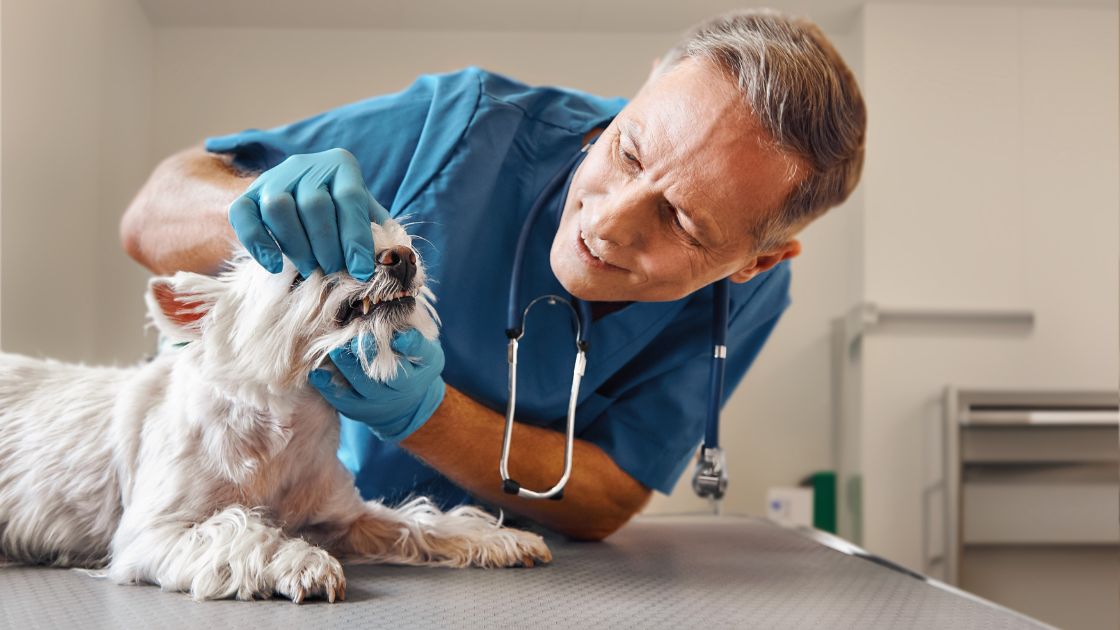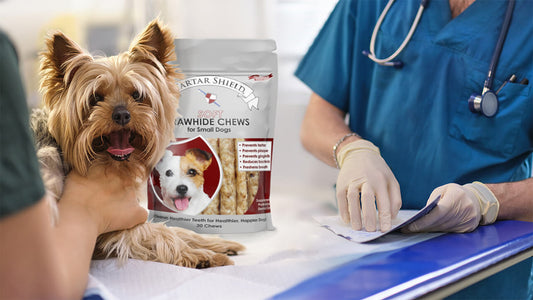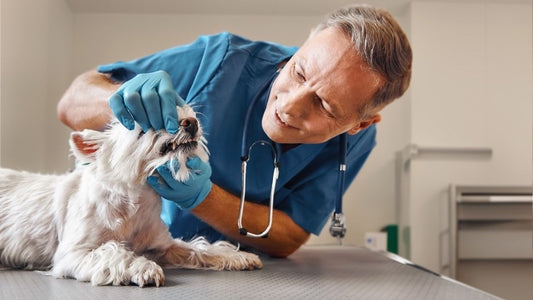Just like humans, dogs and cats need regular dental exams and cleanings as part of their overall healthcare routine. While you can do your part at home by brushing your pet’s teeth and providing tartar-fighting treats, it’s also important to have their teeth professionally examined and cleaned by your veterinarian in order to help prevent periodontal disease and treat any dental issues before they become serious.
However, because dogs and cats must have their dental work performed under general anesthesia, your pet’s dental cleaning is a little more involved than your regular trip to the dentist’s chair. And while that may seem a little daunting, be assured that professional dental care will pay off by helping to keep your furry friend healthy and happy for life.
So what exactly happens at a professional cleaning? Read on for what to expect.
Pre-Cleaning Consult
A few days before your pet’s dental cleaning, your veterinarian will perform a thorough examination. You and your vet will discuss your pet’s medical history, and your vet will likely order a blood test, and possibly other tests, to make sure your pet is healthy enough for anesthesia. You will be given instructions about withholding food for some time before the procedure, and you’ll have a chance to ask questions about the cleaning itself and the anesthesia protocol that will be used.
Why Anesthesia?
Your pet’s dental cleaning is performed under general anesthesia to keep your pet still, safe, and comfortable, and so that your veterinary team can perform work that your dog or cat would just not tolerate awake. With your pet comfortably asleep, your vet can thoroughly examine and clean each tooth and perform additional procedures if necessary, without your pet feeling any pain. Your pet will have a breathing tube so their airway is open and protected, and will have access to pain medications through their IV. A veterinary technician will carefully monitor your pet’s vital signs.
The Procedure
Once your pet is under anesthesia, your veterinarian will perform an exam, checking for signs of gum disease, infections, or cancers, and thoroughly inspecting each tooth for pockets, fractures, and other problems. Your vet may also perform x-rays to evaluate the health of the tooth roots under the gums. If your vet determines that further procedures are needed, such as an extraction of a diseased tooth, they will likely call you to discuss their findings and recommended course of action. Keep your phone handy so you can sign off on treatments that can be done during the same visit.
With each tooth inspected and charted, the vet and vet technicians will perform a thorough cleaning. Special scalers are used to remove plaque and tartar from each tooth, both above and below the gumline. Cleaning below the gumline is key because that’s where gingivitis and periodontal disease tend to develop. Removing tartar and bacteria in this tough-to-reach spot helps get rid of infection sources in your pet’s mouth, protecting them from any further pain, tooth loss, and disease.
Once your pet’s teeth are sparkling clean, your veterinary team will end the procedure by polishing the teeth. This helps reduce future tartar buildup by removing small scratches where tartar and plaque could accumulate. Your pet’s mouth will then be rinsed and dried, and your vet may add a fluoride treatment or sealant. Your pet will then be kept warm and comfortable while being allowed to wake up from anesthesia, and you’ll get a phone call that it’s time to pick them up!
Aftercare
When you pick up your pet, your vet will review how things went and give you any home care instructions. You may be given an antibiotic if an infection was found, or pain medication to alleviate any discomfort caused by dental work performed. Your pet might be a little groggy or sleepy for the rest of the day, but will soon be back to normal. And if you don’t yet have a home dental routine with your pet, this is a great time to start! Plan to brush their teeth on a regular basis, and look to Tartar Shield Pet Products to help your pet’s teeth and gums stay clean and healthy until their next cleaning.



